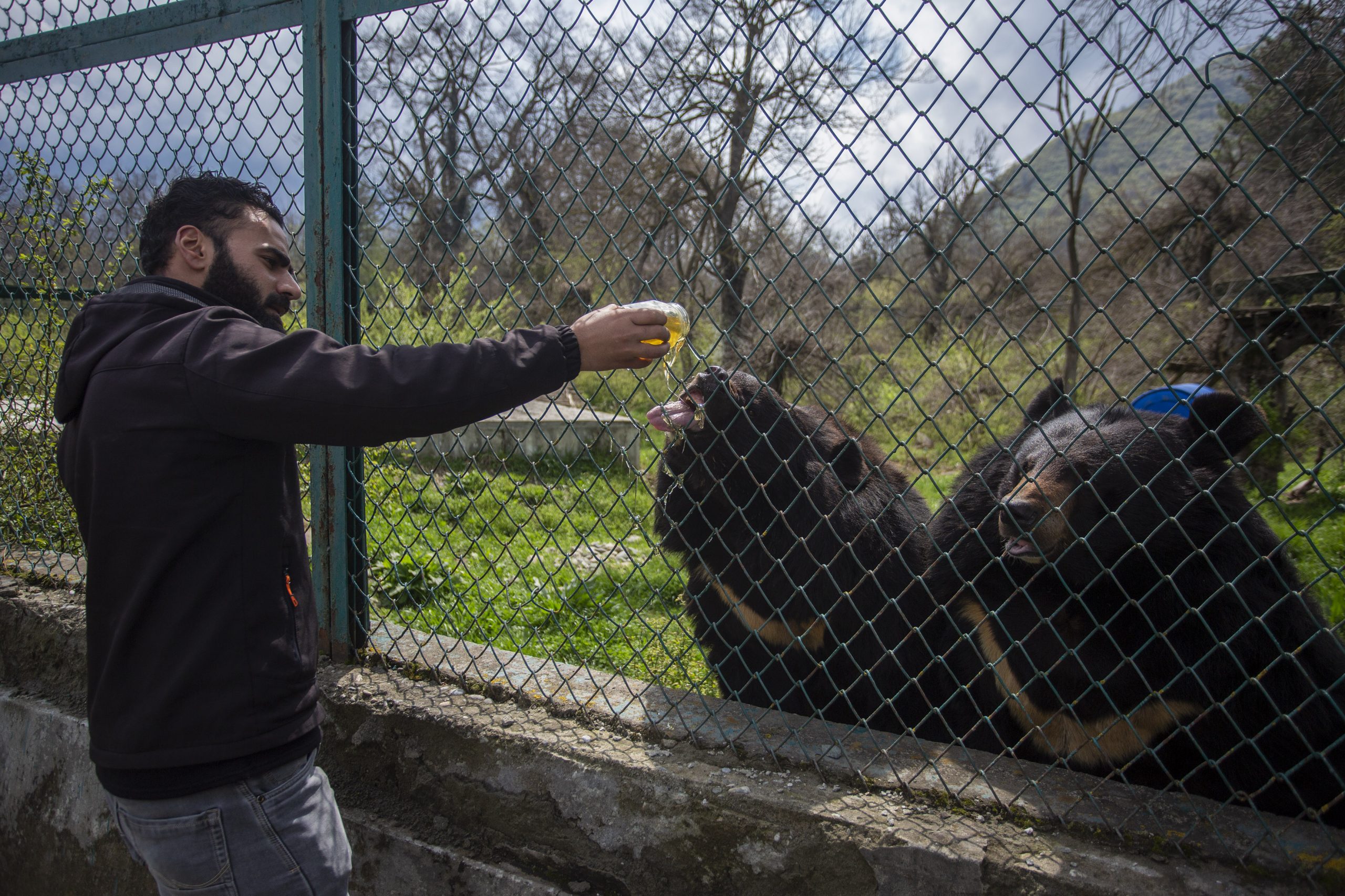
Inside Kashmir’s celebrated wildlife sanctuary, the forest guards are doubling as Covid-19 fighters to check on wild and social animals.
Abid Bhat
Sometime in early week of April, a group of lockdown-weary boys had come out of their homes, as sun shone over the Zabarwan Range of the western Himalayas, in Srinagar’s Harwan area.
They ventured into forest range housing Dachigam National Park. The mood was bright, so was the day promising lockdown liberation.
But their trek was curtly cut short by an alert range officer and his team of forest guards.
Not only the boys were pushed back, they were served a stark reminder of times by the guards policing the recreational zones in woods: ‘Come out of your homes again, if you want to die an infectious death!’
That day, Showkat Jan made up his mind to start a mass campaigning in nearby belts, where people were still going about their routine, with the consent of his seniors.
“Some people were still going about their recreational routine in forest ranges with lunch boxes confusing this pandemic with a regular political lockdown in Kashmir,” Jan, a Range Officer of Dachigam, told Kashmir Observer, as he took a watchful walk in the park.
“They don’t understand that it’s a pernicious lockdown, which none of us has encountered in our lives so far.”
Acting swiftly for the community welfare, Jan and his team went to nearby villages, met Sarpanches, pasted awareness posters on village walls and made announcements through mosque addressing systems.

“One of the things we told people was: ‘Keep yourself away from forest belts, as a certain research has now proved that wild animals and their habitats can act as the carriers of novel coronavirus’,” he said.
But the shift from the park custodians to community campaigners wasn’t easy.
Frequenting the forest range is still a part of life for many people living in rural pockets around the park.
People in Theed, Dhara, Khimbar, Brien, Chasmashahi and other adjoining areas initially took the campaign as restrictions imposed on their natural way of living.
Defying the same guidelines, eight boys from these villages went on a trekking on higher reaches lately. After losing their way in jungle, they sent SOS. It alerted Jan’s vigilant guards, who went on a rescue mission and brought the boys back home.
“Things may not be easy, but we are pleased with the results so far,” Jan said, standing near a cage of wild cats and black bears.

“The sustained awareness campaign has helped us to avoid man-wild conflict, as well as a recreational jungle trips in these pandemic times.”
Amid the campaign, the routine forest task for Jan’s tribe equally looks challenging inside the park carrying the name of “ten villages” relocated for its formation in 1910.
“Ever since we came to know about animals being potential carriers of novel coronavirus, it’s a tightrope walk for our ground staff here,” Jan continued, as one of the attendants feed bear with honey, bread and dates.

Nearby, a ferocious leopard was menacingly staring at a human wall encircling his cage.
These Covid-19 combatants strictly adhere to social distancing inside the park, while keeping a tab on wild and social animals prowling around.
“We don’t go near to animals, as you never know,” Jan said. “Like doctors, we regularly change our clothes outside our living rooms, take shower, before rejoining our families in the evening.”

Unlike others, this unsung Covid-19 force doesn’t get to wear personal protective equipment. But then, the task they’re additionally discharging seems fulfilling to them.
“Keeping our community in check and balance with force might appear crude to many,” Jan said.
“But it’s far better than letting people to roam around and become victims of the virus. Let’s live another day indoors, so that we can come out tomorrow to hit the old routine again.”
Follow this link to join our WhatsApp group: Join Now
Be Part of Quality Journalism |
Quality journalism takes a lot of time, money and hard work to produce and despite all the hardships we still do it. Our reporters and editors are working overtime in Kashmir and beyond to cover what you care about, break big stories, and expose injustices that can change lives. Today more people are reading Kashmir Observer than ever, but only a handful are paying while advertising revenues are falling fast. |
| ACT NOW |
| MONTHLY | Rs 100 | |
| YEARLY | Rs 1000 | |
| LIFETIME | Rs 10000 | |










